Recatest—A Technique for Qualitative and Quantitative Assessment of Deferment and Degraded PVD Coatings and CVD Layers in the Deformed Area in the Scratch Test
Abstract
1. Introduction
2. Methods and Materials
2.1. Spherical Microsections of PVD Coatings-Recalo
- thickness measurement of the coating and of the coating layers,
- evaluation of the coating and layer structure in metallographic examinations,
- microhardness examination on the developed coating cross section,
- distribution of chemical elements on the developed coating cross section,
- quality evaluation of mutual adhesion of the coating layers,
- quality evaluation of adhesion of the coating to the substrate,
- quantitative surface roughness measurement,
- preliminary evaluation of local friction wear,
- density of coating materials (defined abrasion cap geometry),
- point marking of surface with microabrasion, and
- formation of reactive environment diffusion channels to the coating and substrate zones.
- a new specialized optical system integrated with Recalo for using digital cameras,
- a bench (micro-vice) integrated with the x-y cross table for specimen positioning,
- a rotary body ensuring better access,
- an optical system precisely positioned in x–y or x–y–z axes,
- a microprocessor controller with a display of set and current operating parameters,
- a digital camera with a dedicated lens, magnifying software for analysing images, including spherical microsections.
- fastening the specimen in the micro-vice clamps with x-y positioning relative to the microscope and image recorder optical axis,
- surface visual inspection through the microscope or at the computer screen (optical system with a CCD camera)(Delta Optical, Mińsk Mazowiecki, Poland) and choosing the test location Figure 1,
- optical calibration of the image (sharpness, magnification) along with determination of the observation optical axis which changes during the test. The optical calibration involves the first, blind abrasion test with a ball of minimum depth outside the test area. The resultant micro-abrasion is a point at which the optical axis of the image recording system is trained,
- making of a spherical microsection of a determined diameter in the determined place requires that this place be located in the optical axis. To this purpose, the test place is moved in x–y positions along the optical axis.
2.2. Recatest Technique—Qualitative and Quantitative Analysis of the Revealed Structures of Coating Materials
- precise revealing of the microstructure of the deformed coating,
- a quantitative analysis of changes of the microstructure geometry parameters in the deformed coating under the bottom of the scratch,
- a graphical illustration of microstructure geometry changes within the scratch in correlation with scratch test parameters–critical forces Lc1, Lc2, Lc3,
2.3. The Analysis of the Coating Structure on the Spherical Microsection within the Area of Scratches
- Deeper than the scratched bottom: type I.
- At the border of the scratching: type II.
- Less deep than the scratched bottom: type III.
- Case A represents a situation when a continuous uniform coating microstructure is maintained under the scratch bottom and on the scratch rim within the local deformation force Fn (N). The system quality is high. The basic quantitative parameter characterising this case is the maximum coating indentation depth under the scratch bottom hcp [µm] and the resulting depth of indented coating hd (µm),
- Case B shows a coating microstructure under the scratch bottom when the local deformation force Fn (N) is exceeded. The coating undergoes deformation in the form of cracking, chipping and delamination. The coating microstructure partially loses its continuity. The system quality is still satisfactory,
- Case C corresponds to the total coating removal from the plastic strain area when the local deformation force Fn (N) is exceeded. The microstructure observation on the spherical microsection does not indicate the presence of the coating material under the scratch bottom and on the scratch rim. The system quality is poor.
Recatest Analysis of Case A Coating Structures
2.4. Experimental Part
- Testing techniques used
- Metallographic tests
- Scratch tests
- Recatest
2.5. Tests of the CrAlN–Alcrona Balinit Coating
3. Research Results and Discussion
Tests of the (CrN/CrCN)×16/ HS6-5-2 Coating
4. Conclusions
Author Contributions
Funding
Institutional Review Board Statement
Informed Consent Statement
Data Availability Statement
Conflicts of Interest
References
- Kovačić, S.; Cajner, F.; Landek, D. Wear Resistance of TiN/TiCN and TiN/TiBN Multilayer Coatings Applied on Hot Work Tool Steel. Key Eng. Mater. 2016, 674, 257–262. [Google Scholar] [CrossRef]
- Smolik, J.; Słomka, Z.; Paćko, D.; Hermanowicz, P. Cr-CrN and CrN-TiC Multilayer Coatings Manufactured by Means of Vacuum Arc Method. Probl. Eksploat. 2006, nr 4, 91–104. [Google Scholar]
- Ratajski, J.; Gulbiński, W.; Staśkiewicz, J.; Walkowicz, J.; Myśliński, P.; Czyżniewski, A.; Suszko, T.; Gilewicz, A.; Warcholiński, B. Hard Coatings for Woodworking Tools–A Review. J. Achiev. Mater. Manuf. Eng. 2009, 37, 668–674. [Google Scholar]
- Gilewicz, P.; Olik, R.; Szparaga, Ł.; Ratajski, J. The Properties of Multi-Module and Gradient Coatings Base on CrN/CrCN Deposited on Nitrided 4140 Steel. Problemy Eksploatacji [Internet]. 2014. Available online: http://yadda.icm.edu.pl/baztech/element/bwmeta1.element.baztech-505f4bc7-8f38-4e7c-b9f7-8f7e9b8a53ae (accessed on 28 March 2021).
- Duminica, F.-D.; Belchi, R.; Libralesso, L.; Mercier, D. Investigation of Cr(N)/DLC Multilayer Coatings Elaborated by PVD for High Wear Resistance and Low Friction Applications. Surf. Coat. Technol. 2018, 337, 396–403. [Google Scholar] [CrossRef]
- Kot, M.; Rakowski, W.A.; Major, Ł.; Major, R.; Morgiel, J. Effect of Bilayer Period on Properties of Cr/CrN Multilayer Coatings Produced by Laser Ablation. Surf. Coat. Technol. 2008, 202, 3501–3506. [Google Scholar] [CrossRef]
- Fox-Rabinovich, G.S.; Kovalev, A.I.; Aguirre, M.H.; Beake, B.D.; Yamamoto, K.; Veldhuis, S.C.; Endrino, J.L.; Wainstein, D.L.; Rashkovskiy, A.Y. Design and Performance of AlTiN and TiAlCrN PVD Coatings for Machining of Hard to Cut Materials. Surf. Coat. Technol. 2009, 204, 489–496. [Google Scholar] [CrossRef]
- Mo, J.L.; Zhu, M.H.; Lei, B.; Leng, Y.X.; Huang, N. Comparison of Tribological Behaviours of AlCrN and TiAlN Coatings—Deposited by Physical Vapor Deposition. Wear 2007, 263, 1423–1429. [Google Scholar] [CrossRef]
- Bouabibsa, I.; Lamri, S.; Sanchette, F. Structure, Mechanical and Tribological Properties of Me-Doped Diamond-Like Carbon (DLC) (Me = Al, Ti, or Nb) Hydrogenated Amorphous Carbon Coatings. Coatings 2018, 8, 370. [Google Scholar] [CrossRef]
- Polok-Rubiniec, M.; Dobrzański, L.A.; Adamiak, M. The Properties and Wear Resistance of the CrN PVD Coatings. J. Achiev. Mater. Manuf. Eng. 2008, 30, 165–171. [Google Scholar]
- Ratajski, J.; Gilewicz, A.; Mydłowska, K.; Szparaga, Ł. Inter-Relationship between Coating Micro/Nanostructure and the Tribological Performance of Zr–C Gradient Coatings. Coatings 2020, 10, 1121. [Google Scholar] [CrossRef]
- Dobrzański, L.A.; Żukowska, L.W. Structure and Properties of Gradient PVD Coatings Deposited on the Sintered Tool Materials. J. Achiev. Mater. Manuf. Eng. 2011, 44, 115–139. [Google Scholar]
- Panjan, P.; Čekada, M.; Navinšek, B. A New Experimental Method for Studying the Cracking Behaviour of PVD Multilayer Coatings. Surf. Coat. Technol. 2003, 174, 55–62. [Google Scholar] [CrossRef]
- Panjan, P.; Drnovšek, A.; Gselman, P.; Čekada, M.; Panjan, M. Review of Growth Defects in Thin Films Prepared by PVD Techniques. Coatings 2020, 10, 447. [Google Scholar] [CrossRef]
- Betiuk, M.; Domanowski, P. Obtaining the CrN Coating inside the Barrel Using a Cylindrical Magnetron with a Dynamic Magnetic Field. In AIP Conference Proceedings; AIP Publishing LLC: New York, NY, USA, 2018; Volume 2017, p. 020002. [Google Scholar]
- Betiuk, M.; Pokorska, I.; Nakonieczny, A. Zastosowanie metody rysy i Kulotestera do oceny jakości powłok PVD. Inżynieria Powierzchni 2009, 3, 34–40. [Google Scholar]
- ISO. ISO 26423:2016 Fine Ceramics (Advanced Ceramics, Advanced Technical Ceramics)—Determination of Coating Thickness by Crater-Grinding Method; ISO: Geneva, Switrzerland, 2016. [Google Scholar]
- ASTM. ASTM C1624—05(2015) Standard Test Method for Adhesion Strength and Mechanical Failure Modes of Ceramic Coatings by Quantitative Single Point Scratch Testing; ASTM: West Conshohocken, PA, USA, 2015. [Google Scholar]
- ISO. ISO 20502:2005 Fine Ceramics (Advanced Ceramics, Advanced Technical Ceramics)—Determination of Adhesion of Ceramic Coatings by Scratch Testing; ISO: Geneva, Switrzerland, 2005. [Google Scholar]
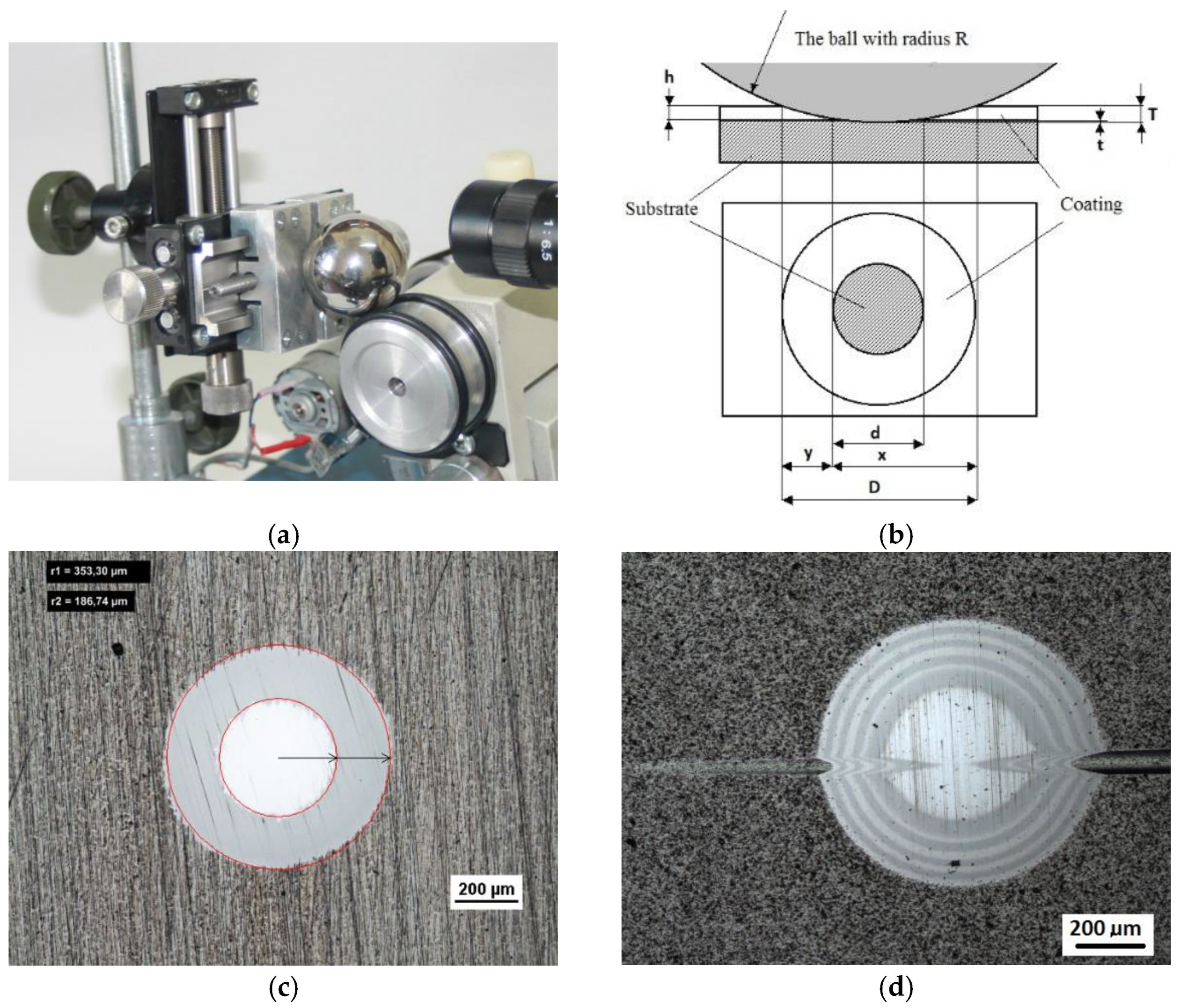
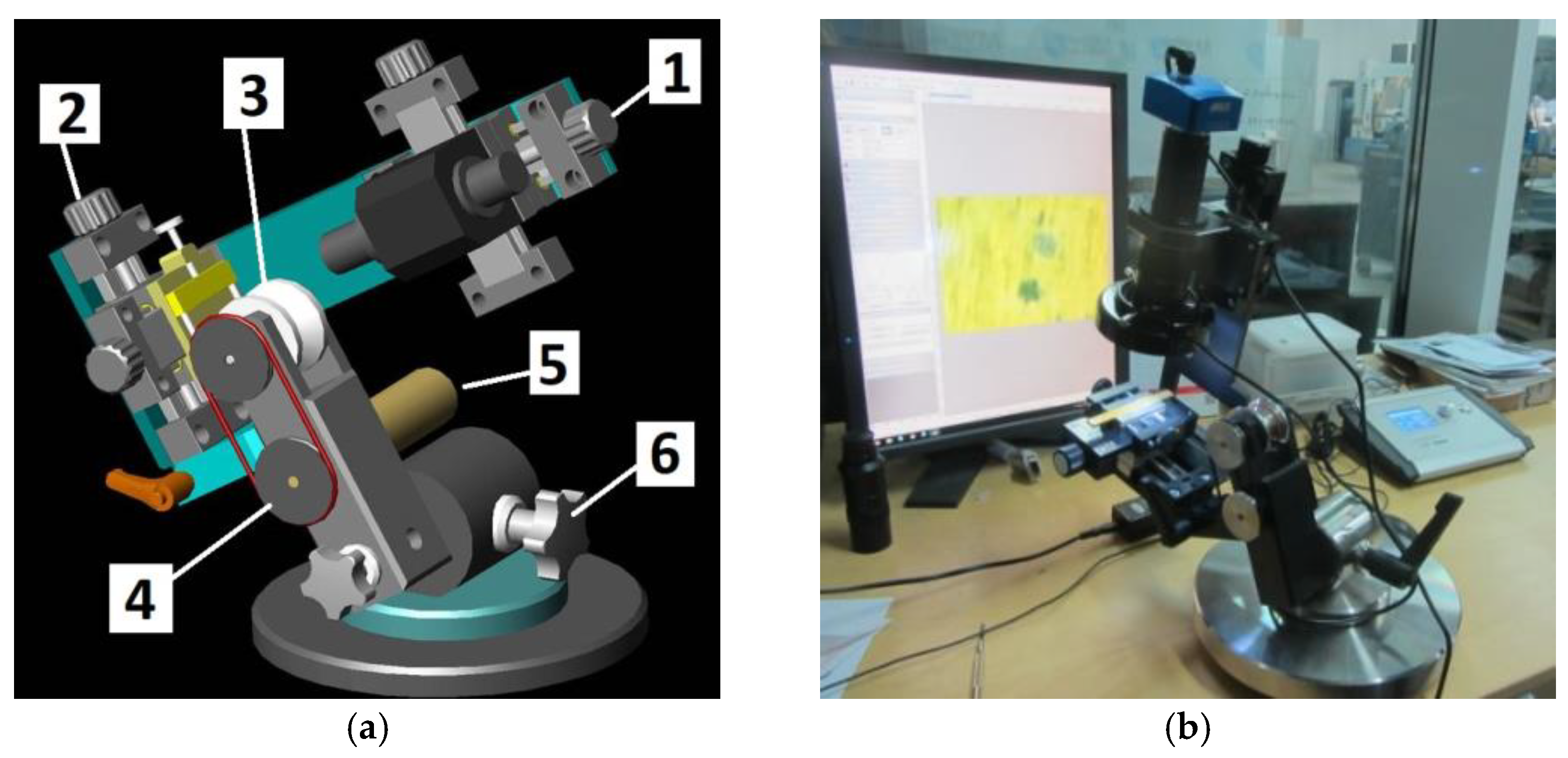

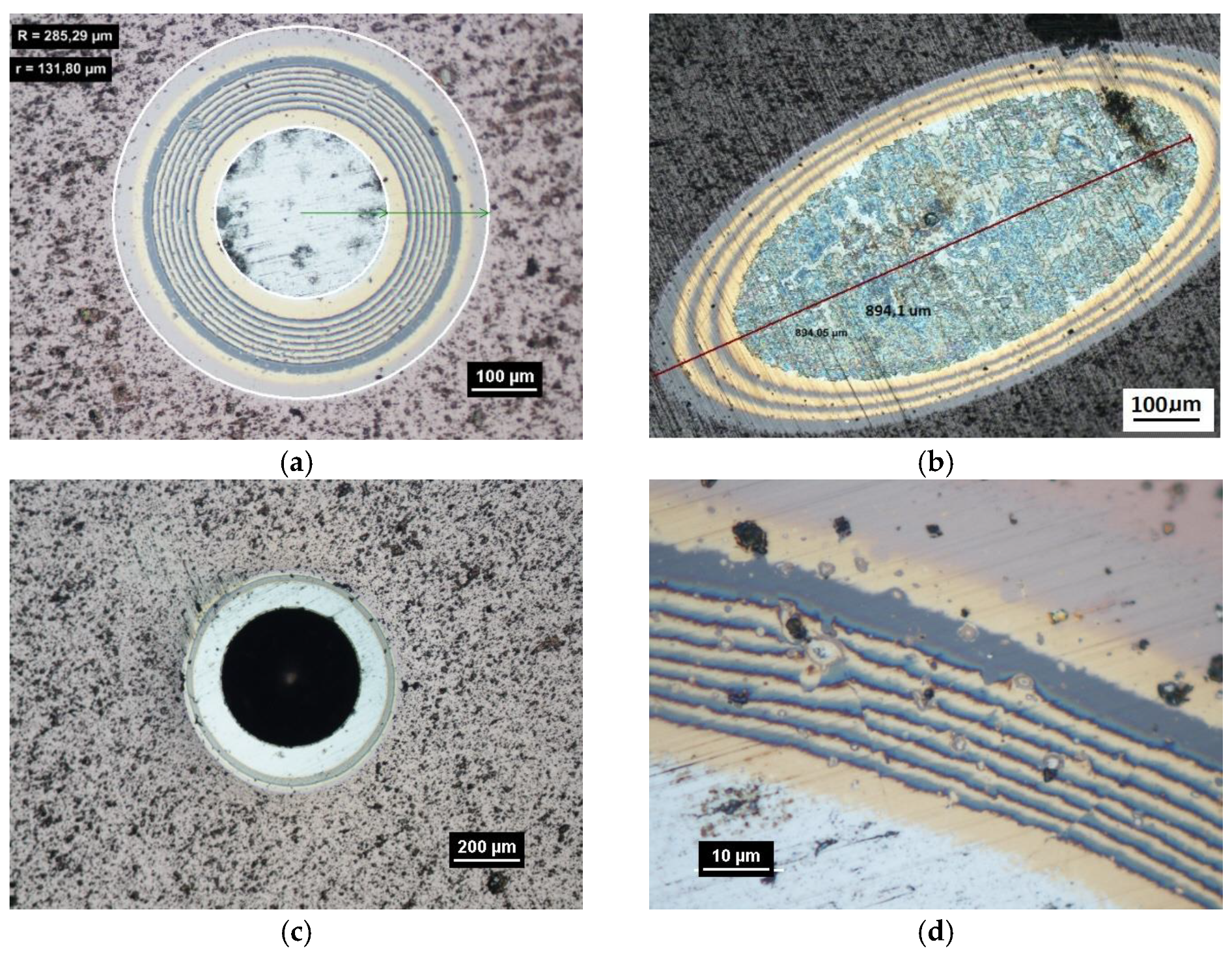




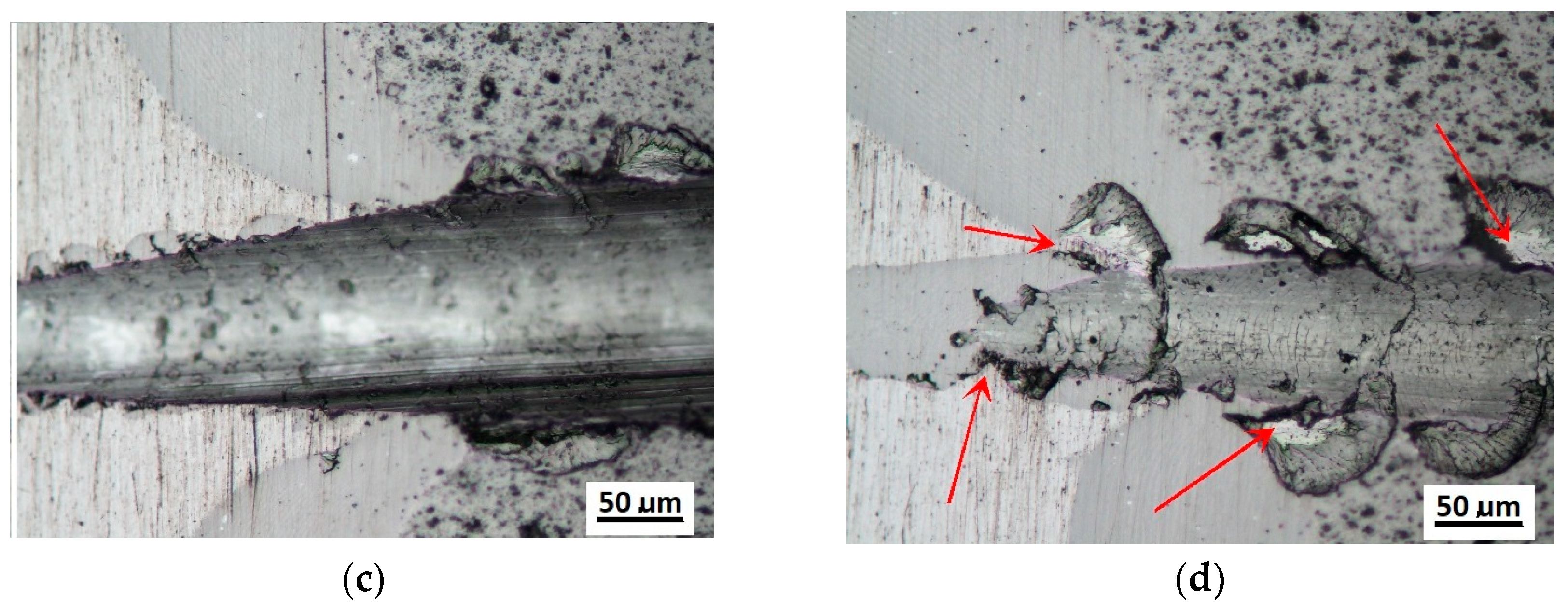


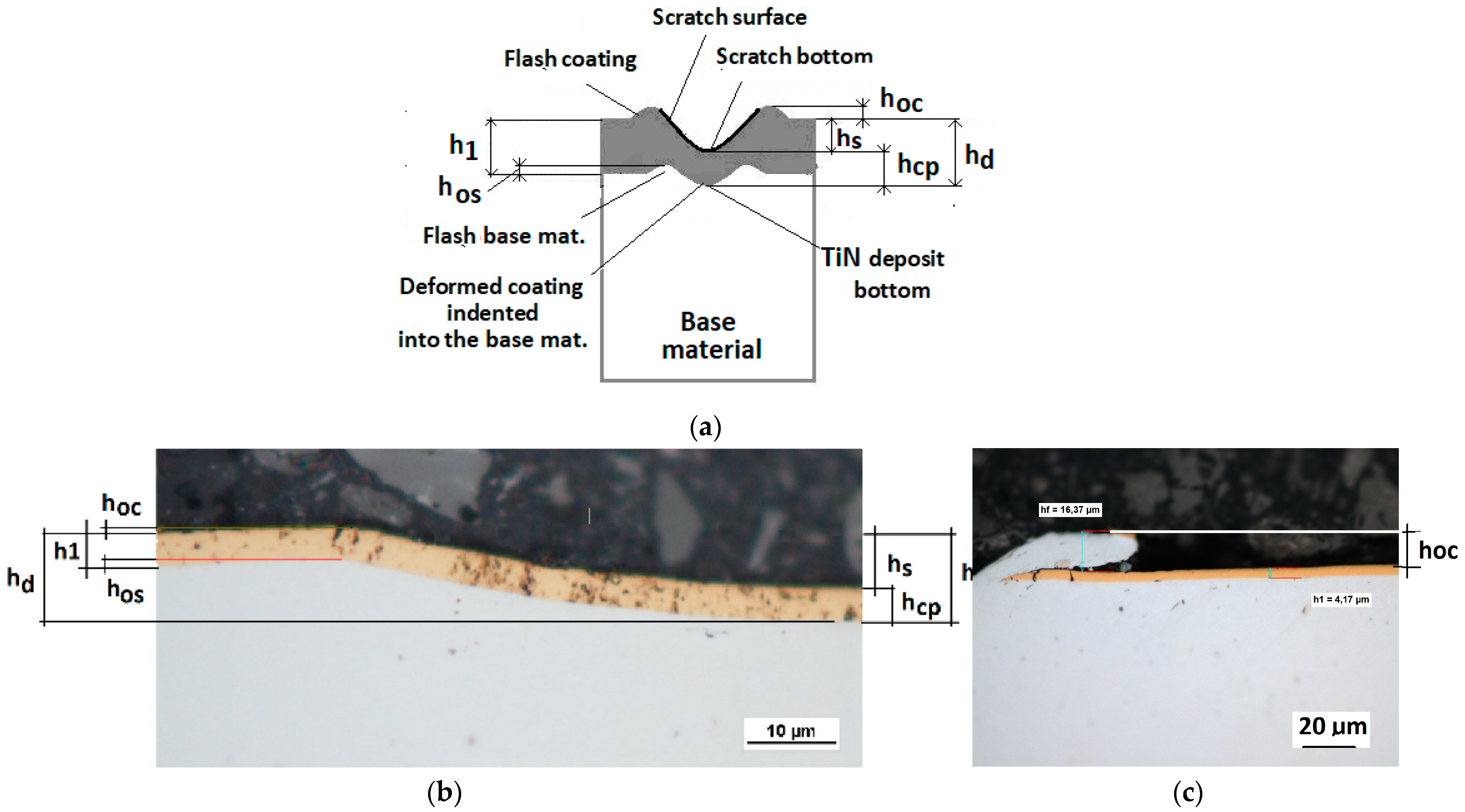
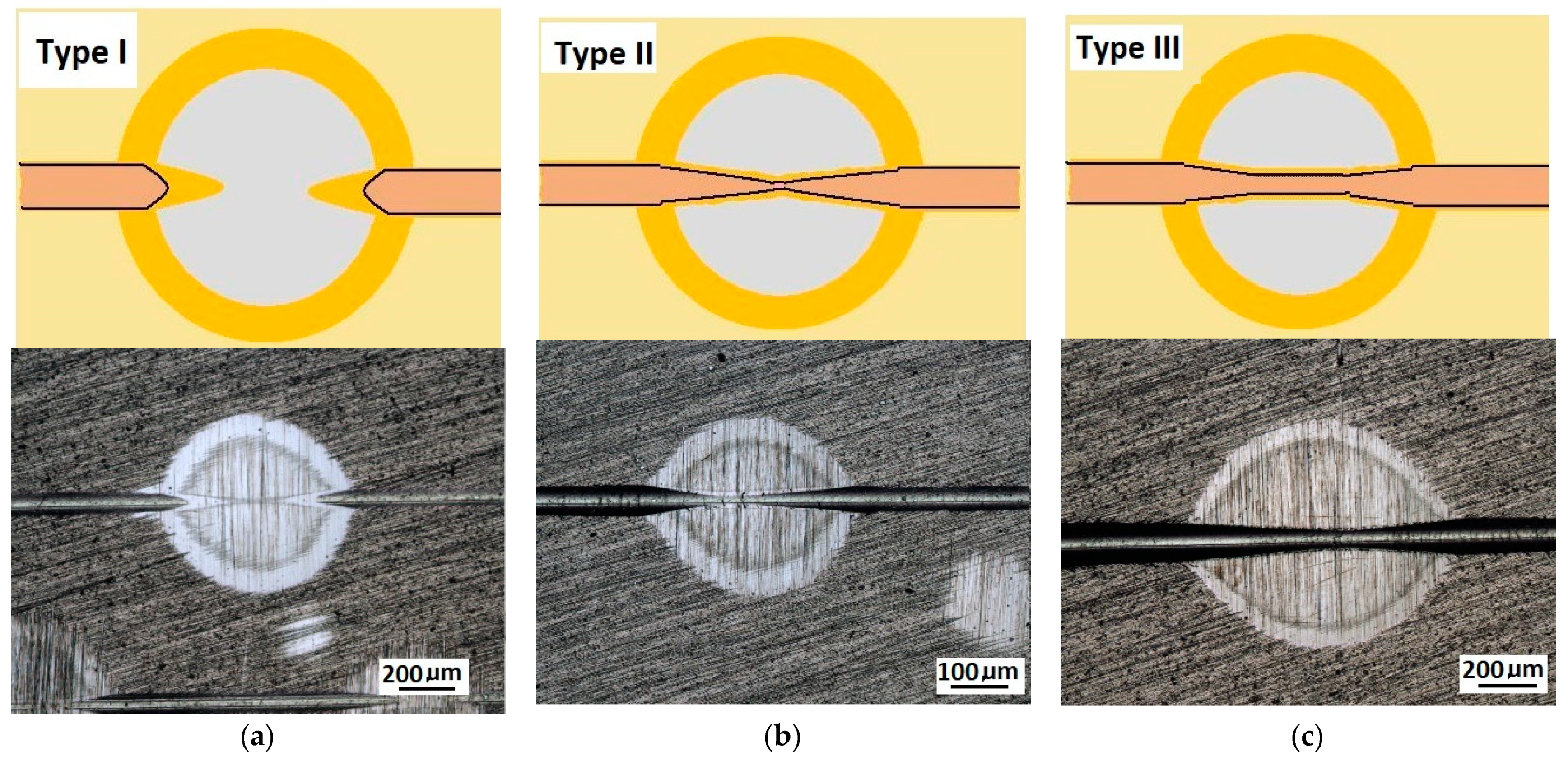
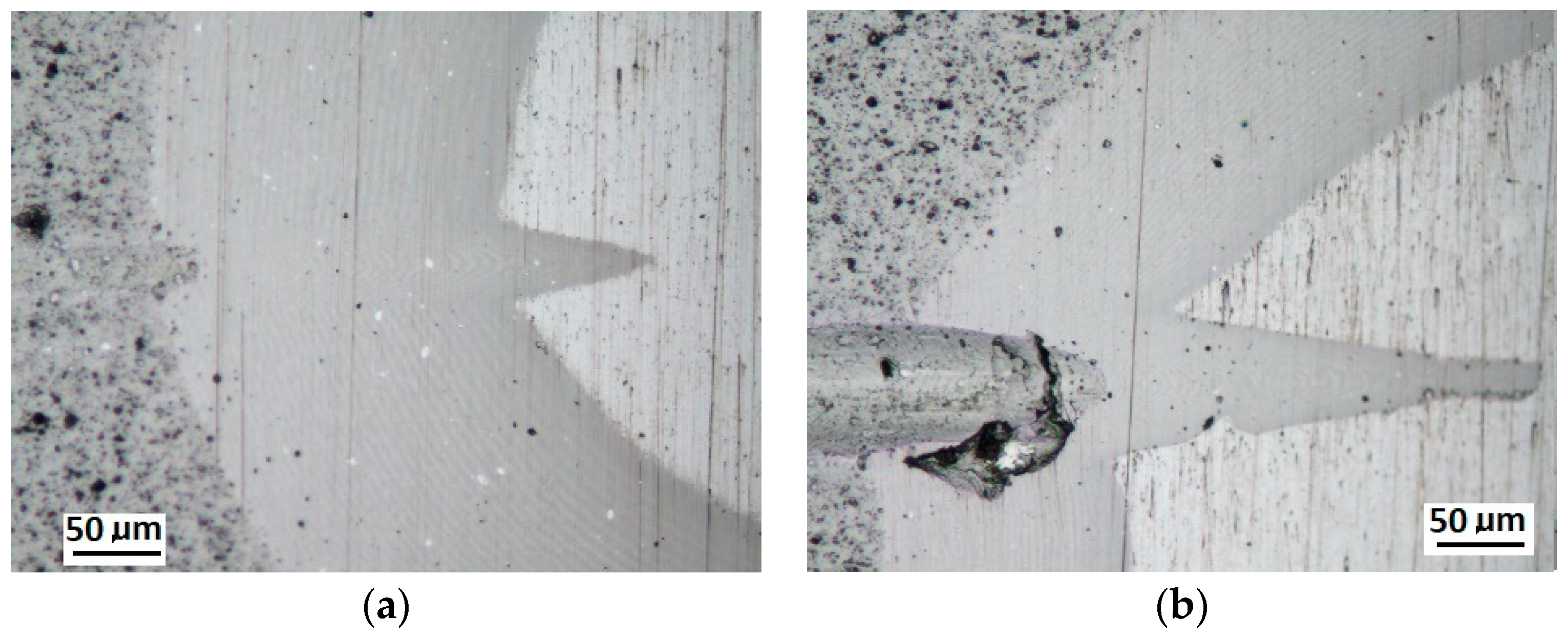

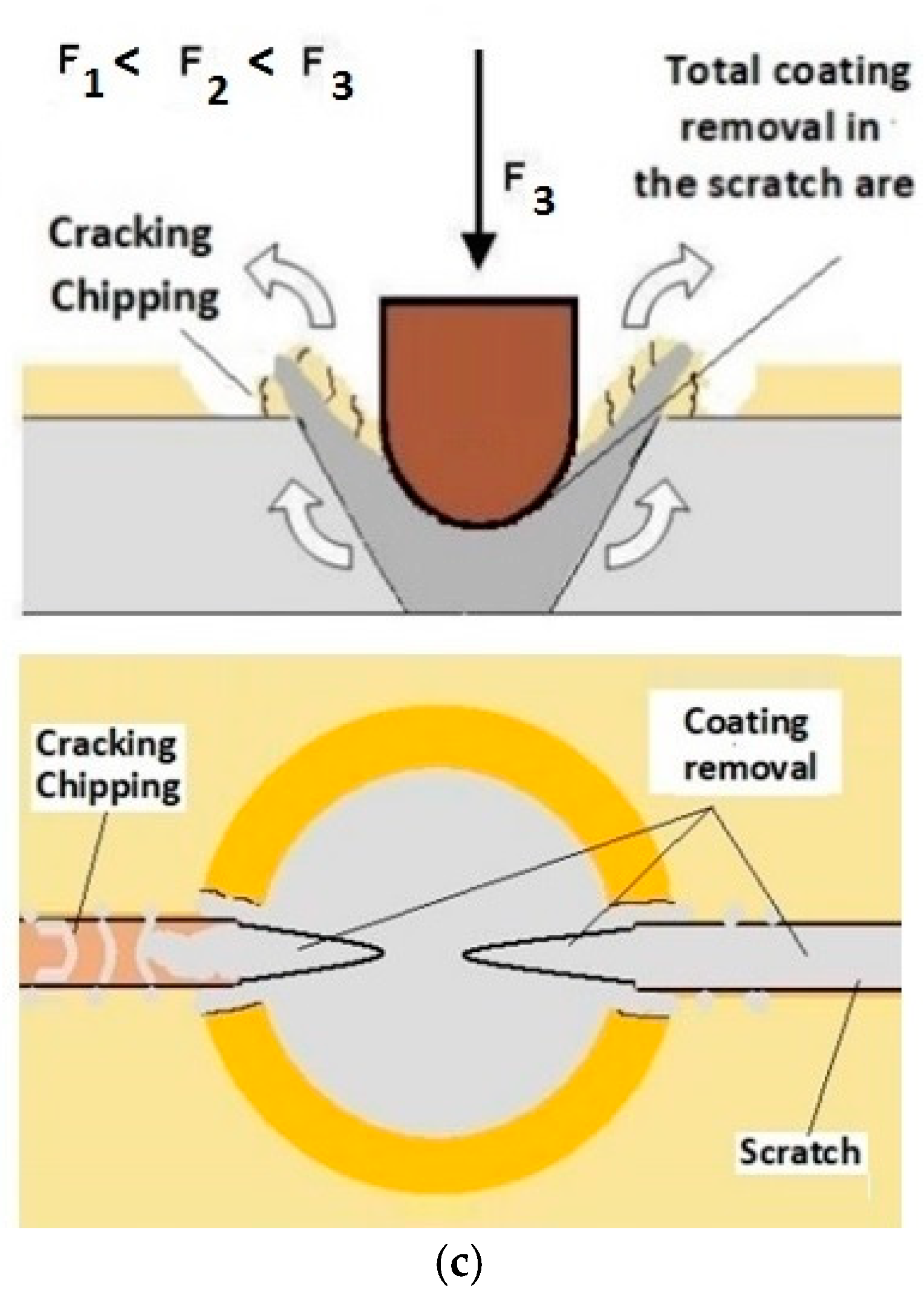

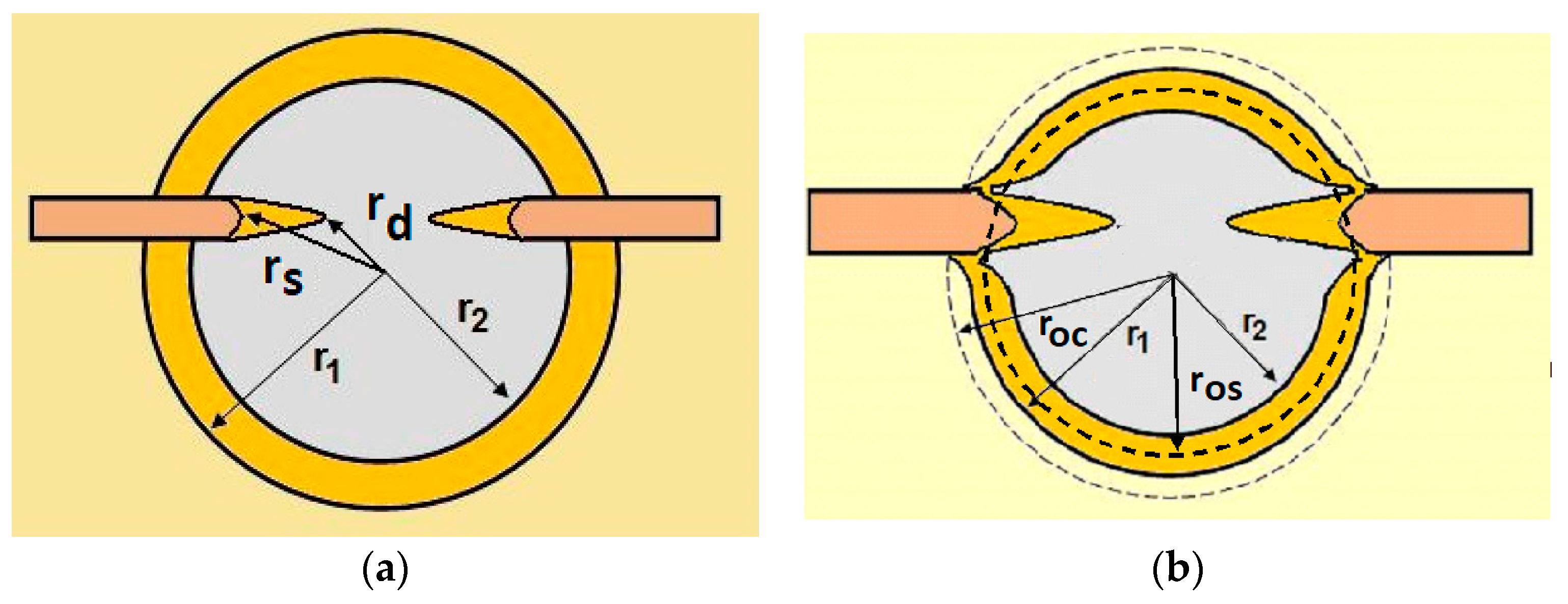
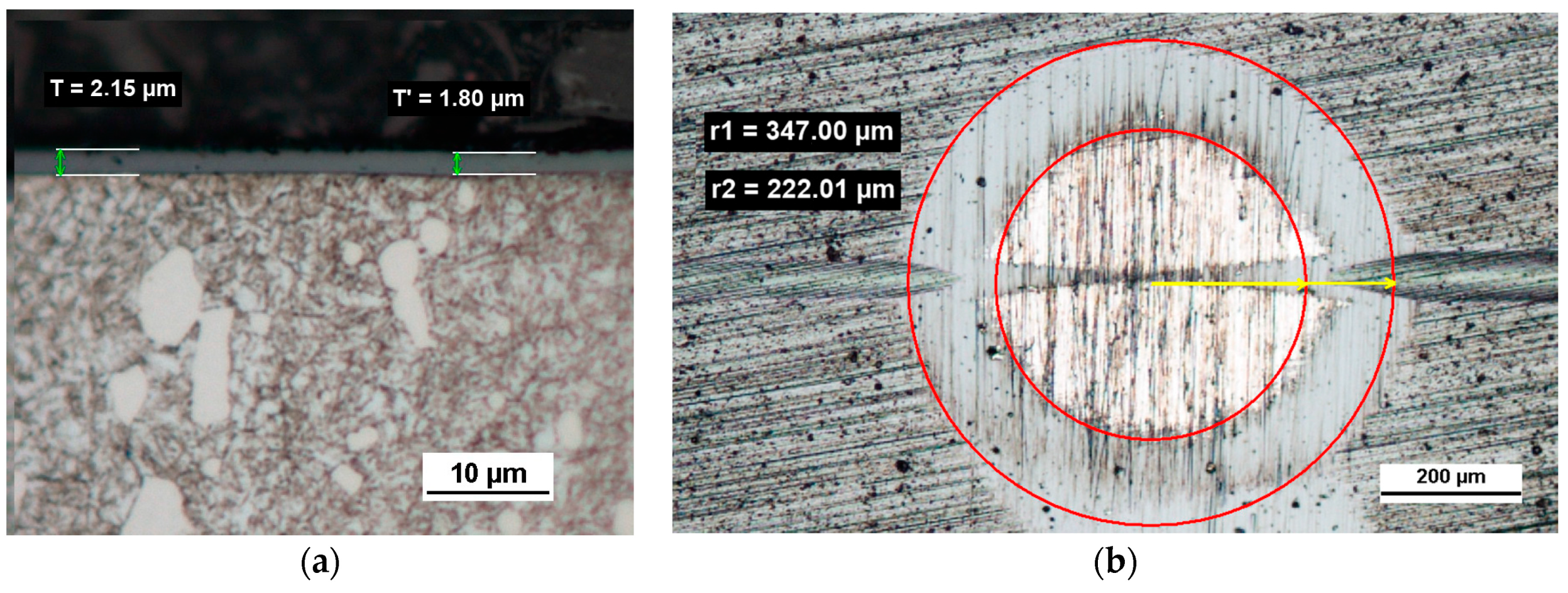


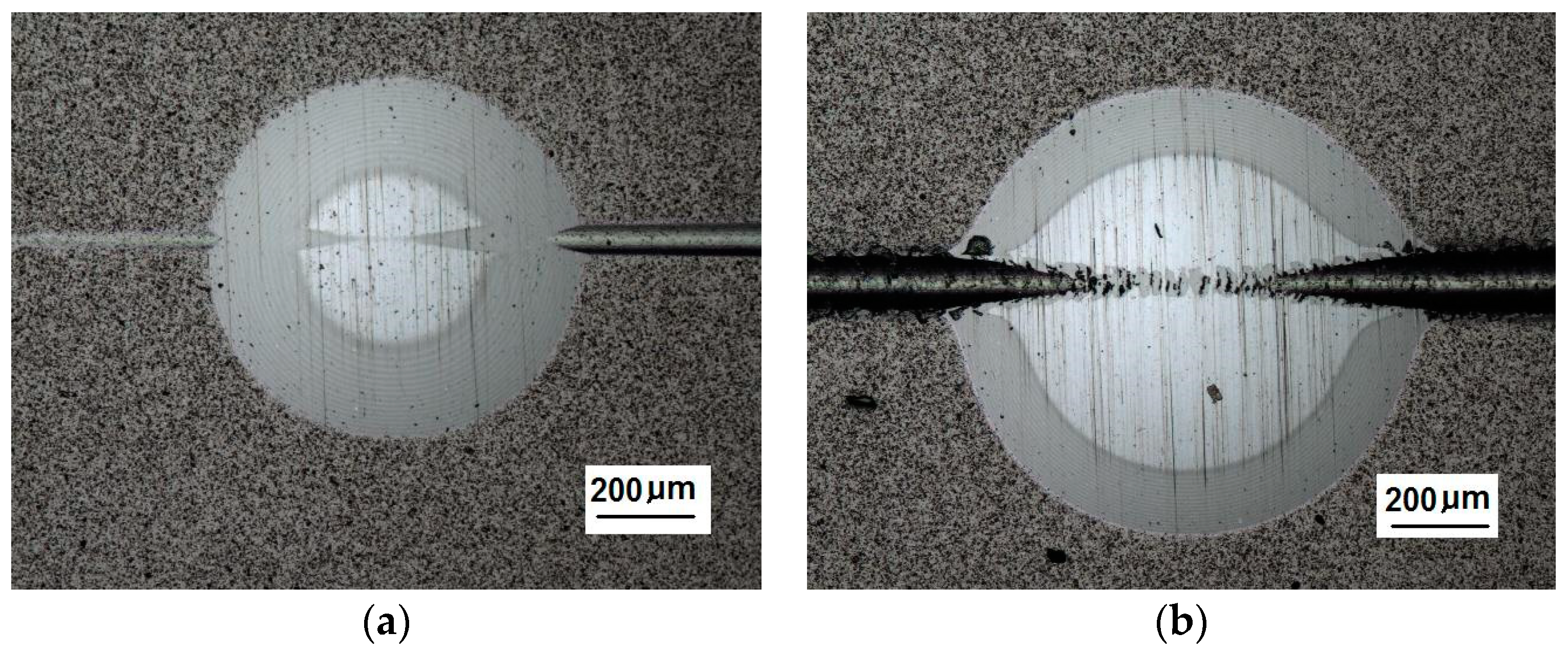
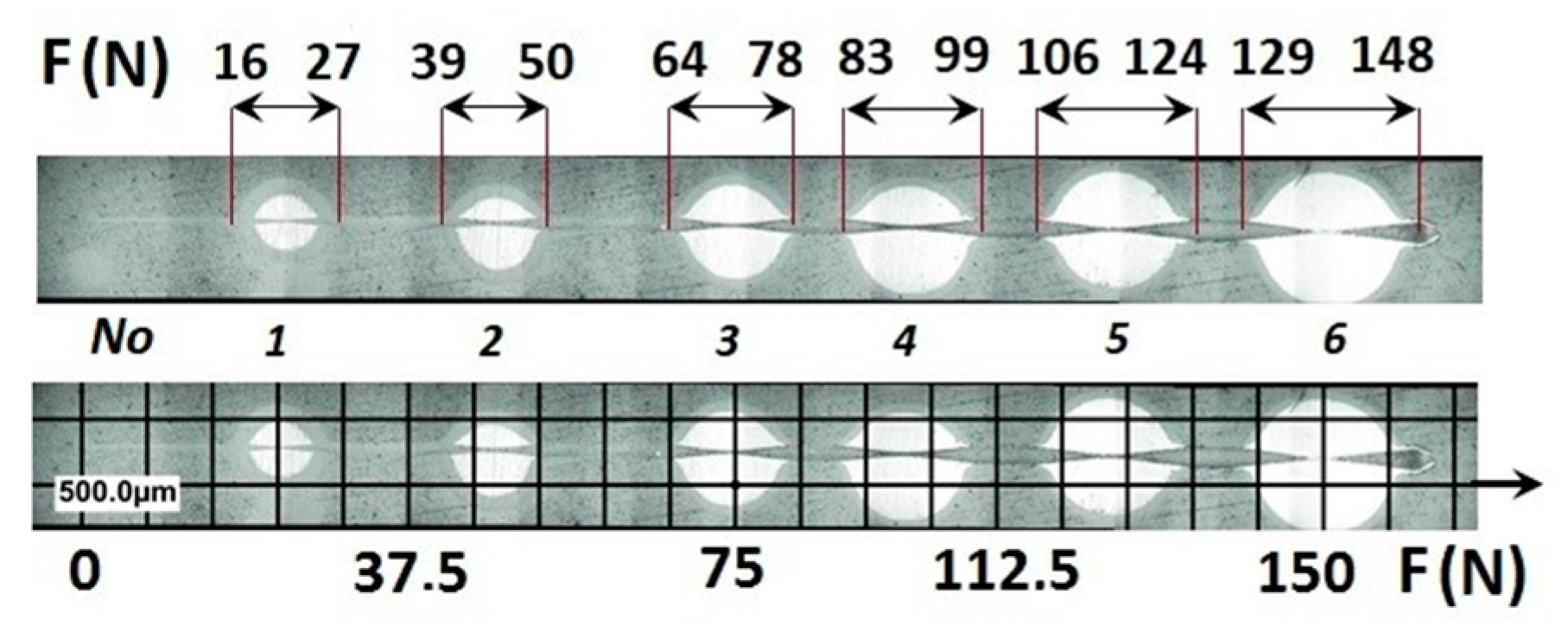




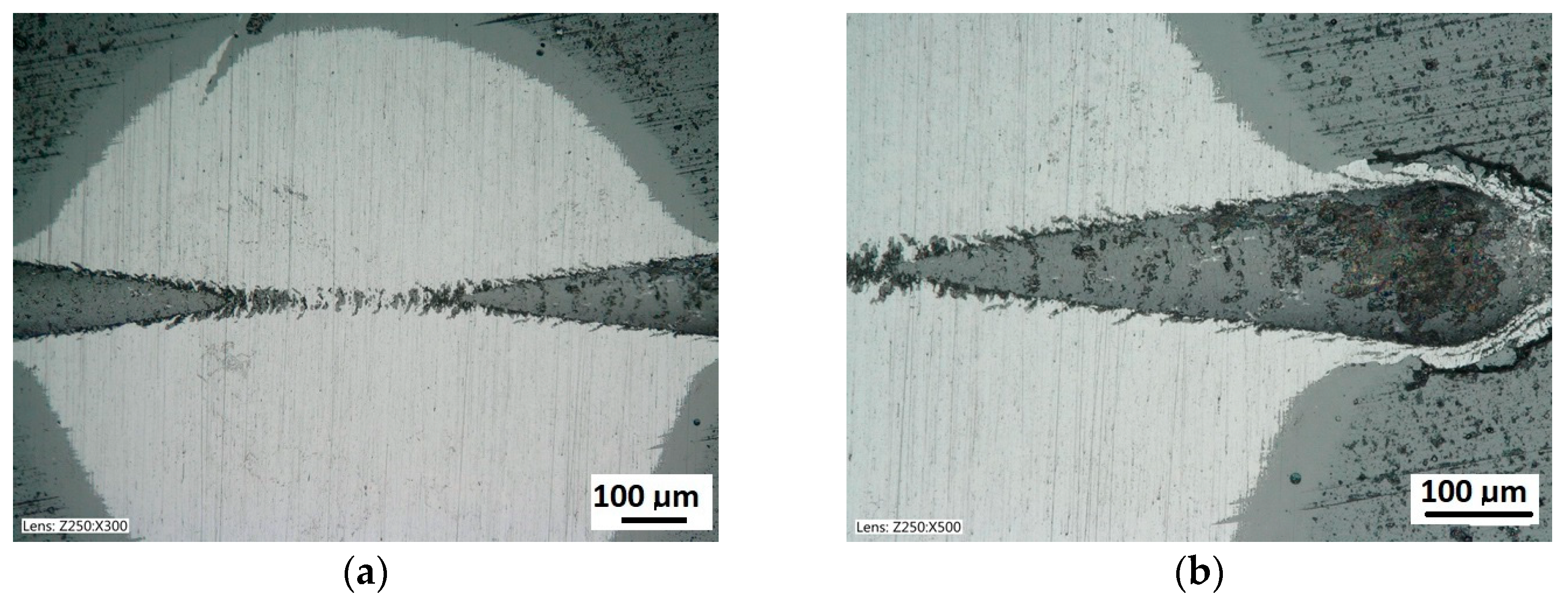
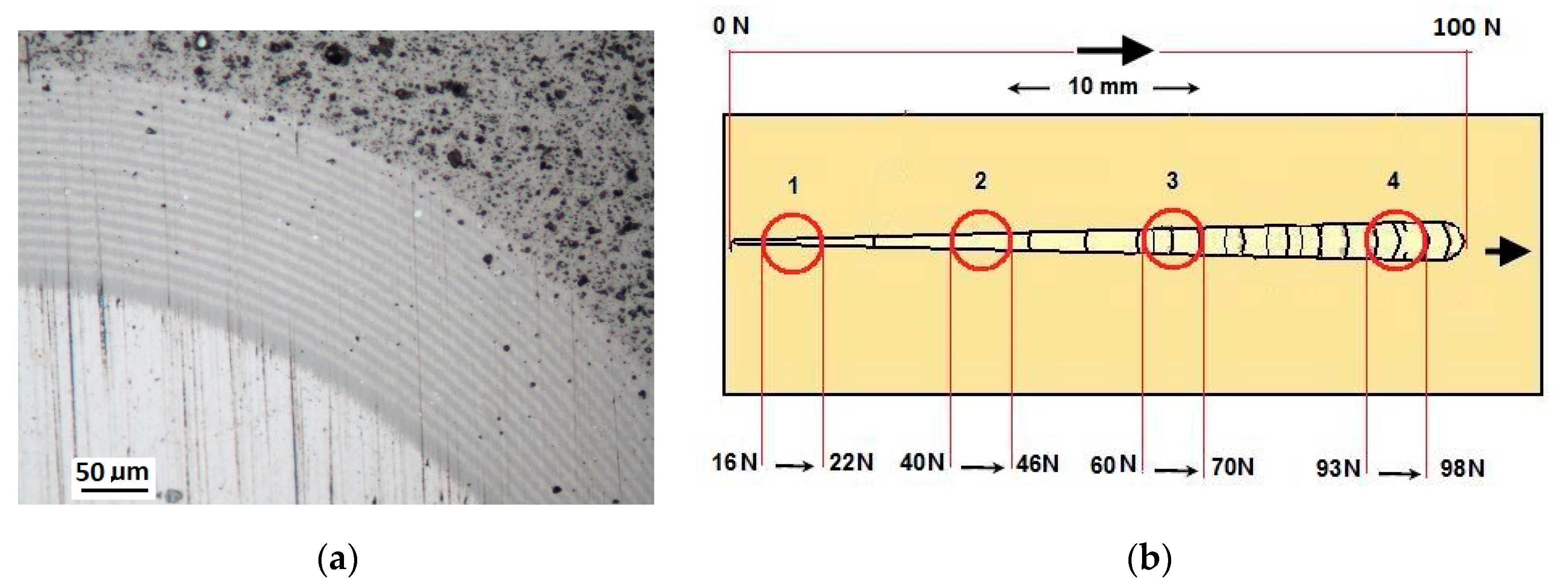
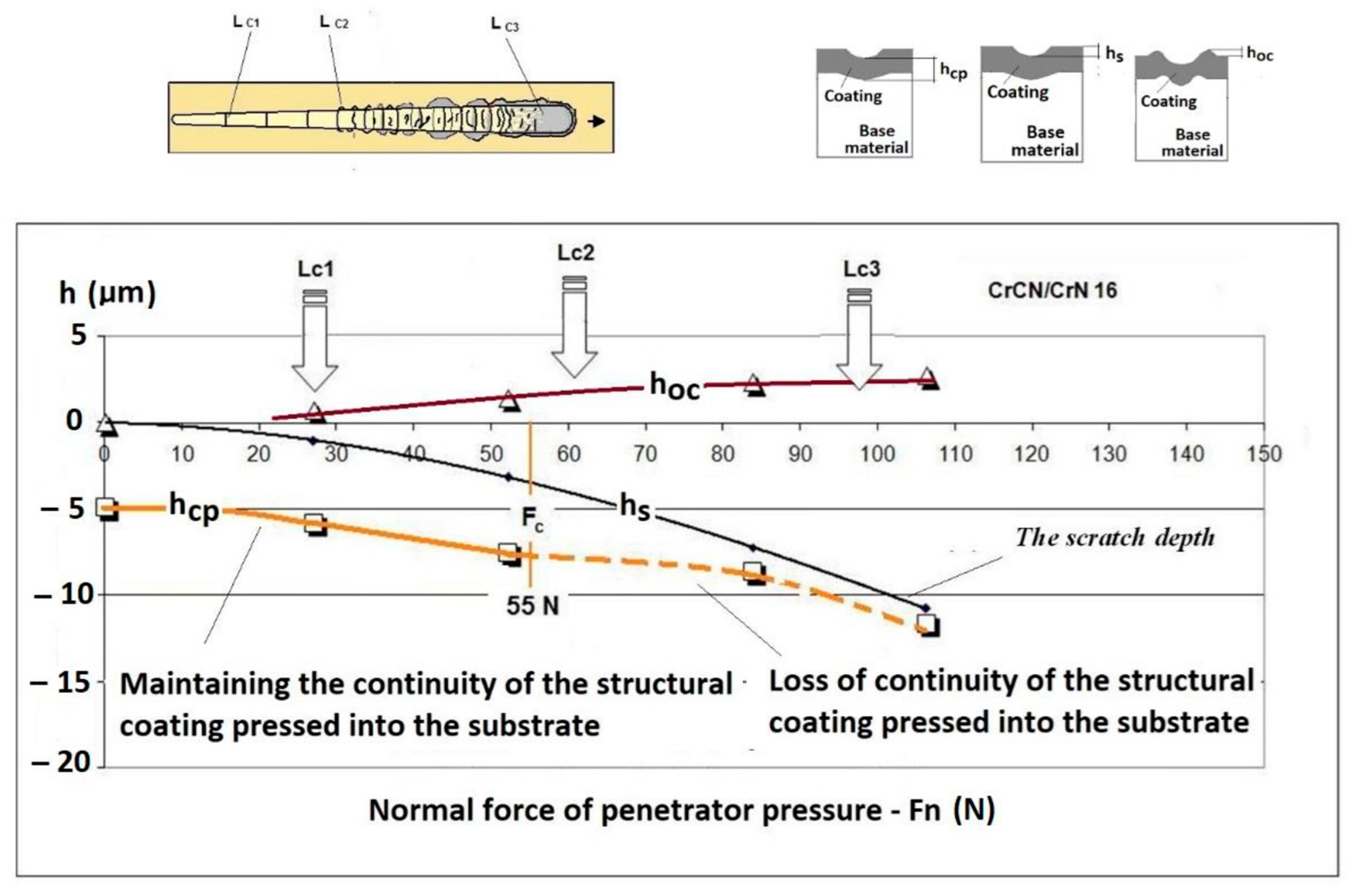
| Geometry of Coated Surface | Coatings Thickness (µm) | Depth Penetration (µm) |
|---|---|---|
| Planar (Figure a)—The total penetration depth of the ball in the layer and into the substrate is: | - | |
| Planar (Figure a)—The depth penetration in the base material is: | - | |
| Planar (Figure a)—The thickness of the layer, coatings is: | - | |
| Cylindrical convex (Figure b) The thickness of the layer is: | - | |
| Cylindrical concave (Figure c) The thickness of the layer is | - | |
| Conical (Figure b) The thickness of the layer is | - | |
| Spherical (Figure d) The thickness of the layer is: | - |
| Trigonometric Relationship Measured Parameter | Diagram of the Deformed Areological System | Spherical Cut | |
|---|---|---|---|
| 1 | Total penetration depth of the ball | 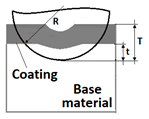 |  |
| 2 | Coating thickness | 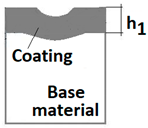 | 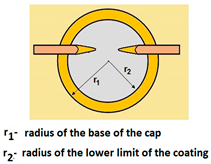 |
| 3 | Scratch bottom depth |  | 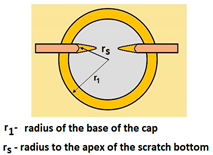 |
| 4 | The depth of pressing the coating as measured from the surface |  | 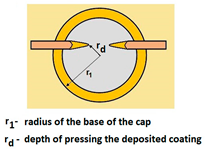 |
| 5 | The depth of the coating pressing in measured from the surface of the base material | 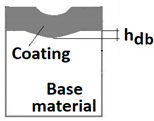 | 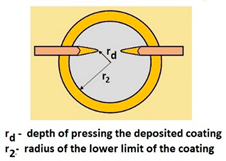 |
| 6 | Thickness of the coating pressing under the scratch bottom |  |  |
| 7 | The height of the outflow of the coating material | 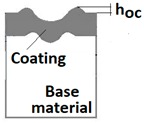 | 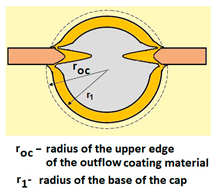 |
| 8 | The height of the outflow of the base material | 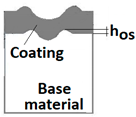 |  |
| Values | 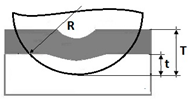 |  |  |  | |||
| Parametr | T (µm) | hs’ (µm) | hs’’ (µm) | hoc’ (µm) | hoc’’ (µm) | hos’ (µm) | hos’’ (µm) |
| 1 | 4.0 | −1.3 | −1.9 | - | - | - | - |
| 2 | 5.0 | −4.1 | −4.1 | 1.1 | 0.9 | 1.3 | 0.9 |
| 3 | 6.5 | −4.1 | −4.7 | 2.2 | 1.9 | 1.9 | 1.9 |
| 4 | 7.9 | −6.0 | −6.2 | 2.2 | 2.5 | 2.4 | 3.4 |
| 5 | 9.0 | −6.7 | −6.7 | 3.6 | 4.1 | 3.5 | 3.8 |
| 5 | 10.9 | −9.4 | −10 | 4.2 | - | 4.8 | - |
Publisher’s Note: MDPI stays neutral with regard to jurisdictional claims in published maps and institutional affiliations. |
© 2021 by the authors. Licensee MDPI, Basel, Switzerland. This article is an open access article distributed under the terms and conditions of the Creative Commons Attribution (CC BY) license (https://creativecommons.org/licenses/by/4.0/).
Share and Cite
Domanowski, P.; Betiuk, M. Recatest—A Technique for Qualitative and Quantitative Assessment of Deferment and Degraded PVD Coatings and CVD Layers in the Deformed Area in the Scratch Test. Materials 2021, 14, 2625. https://doi.org/10.3390/ma14102625
Domanowski P, Betiuk M. Recatest—A Technique for Qualitative and Quantitative Assessment of Deferment and Degraded PVD Coatings and CVD Layers in the Deformed Area in the Scratch Test. Materials. 2021; 14(10):2625. https://doi.org/10.3390/ma14102625
Chicago/Turabian StyleDomanowski, Piotr, and Marek Betiuk. 2021. "Recatest—A Technique for Qualitative and Quantitative Assessment of Deferment and Degraded PVD Coatings and CVD Layers in the Deformed Area in the Scratch Test" Materials 14, no. 10: 2625. https://doi.org/10.3390/ma14102625
APA StyleDomanowski, P., & Betiuk, M. (2021). Recatest—A Technique for Qualitative and Quantitative Assessment of Deferment and Degraded PVD Coatings and CVD Layers in the Deformed Area in the Scratch Test. Materials, 14(10), 2625. https://doi.org/10.3390/ma14102625




